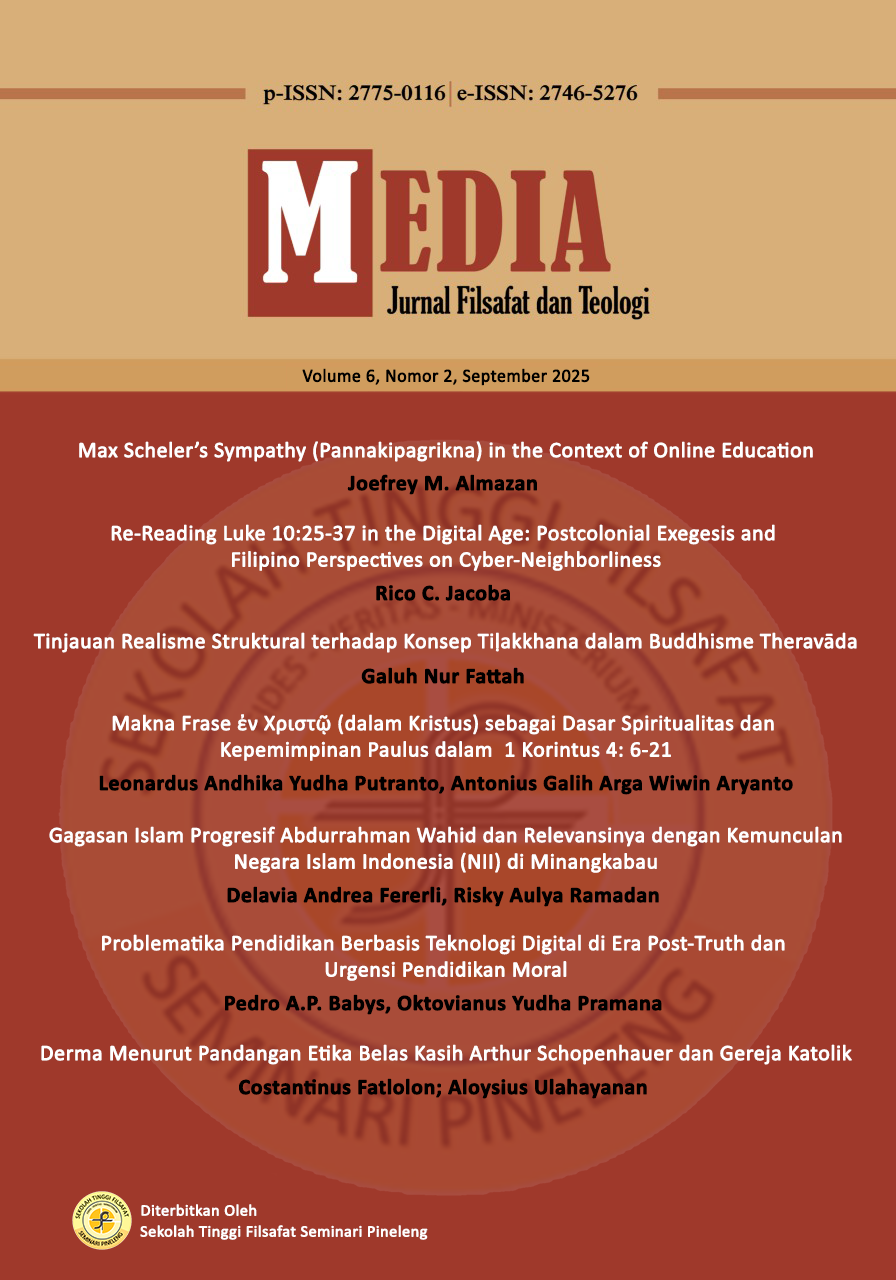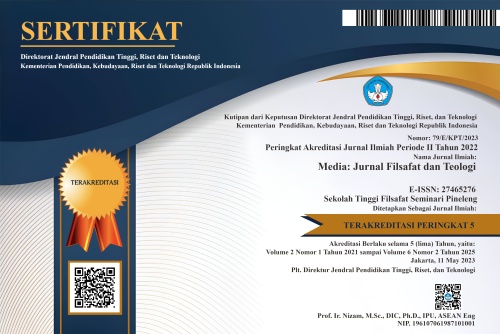Max Scheler’s Sympathy (Pannakipagrikna) in the Context of Online Education
DOI:
https://doi.org/10.53396/media.v6i2.649Keywords:
pannakipagrikna, online learning, phenomenology, value-centered, sympathyAbstract
This study examines the relevance of Max Scheler’s concept of sympathy in the context of online education by situating it within the Ilocano cultural value of pannakipagrikna, which embodies empathy and emotional sensitivity. Employing a transcendental-phenomenological approach, the research integrates textual analysis of Scheler’s works with semi-structured interviews among Ilocano learners. The findings reveal that pannakipagrikna is expressed through four key themes: pannakaawat (understanding), naimpasnekan a panagdengngeg (active listening), panangtarabay (guidance), and pannakimaysa (emotional unity). These insights highlight the importance of affective and value-based engagement in addressing emotional detachment in online learning. The teacher emerges not merely as a transmitter of knowledge but as a moral and empathetic guide fostering students’ holistic development. The study concludes that contextualizing Scheler’s philosophical anthropology through Ilocano values enriches value-centered pedagogy and broadens the scope of phenomenology beyond Western frameworks.
References
Arya, Aneri. “An Overview of Textual Analysis as a Research Method for Cultural Studies.” International Journal for Innovative Research in Multidisciplinary Field 6, no. 3 (March 2020).
Baticulon, Ronnie E., et al. “Barriers to Online Learning in the Time of COVID-19: A National Survey of Medical Students in the Philippines.” medRxiv, July 18, 2020. https://doi.org/10.1101/2020.07.16.20155747.
Cassirer, Ernst. The Philosophy of Symbolic Forms III. New Haven: Yale University Press, 1957.
Cheung, Ching-yuen. Person and Man in the Philosophical Anthropology of Max Scheler. Master's Thesis, Chinese University of Hong Kong, 2000.
Creswell, John. Qualitative Inquiry and Research Design: Choosing Among Five Traditions. California: Sage Publications, 1999.
Fu-Lin, Chien. Love in Education: A Philosophical Examination with Special Reference to the Phenomenology of Max Scheler. London: University of London, 1997.
Husserl, Edmund. “Erste Philosophie. Erste Teil: Kritishe Ideengeschichte.” Edited by R. Boehm. Husserliana, vol. 2. The Hague: Nijhoff, 1956.
Mercado, Leonardo N. Elements of Filipino Philosophy. Tacloban City: Divine Word University Publications, 1993.
Robinson, Jenefer. Deeper than Reason: Emotion and its Role in Literature, Music, and Art. Oxford: Oxford University Press, 2005.
Scheler, Max. Formalism in Ethics and Non-Formal Ethics of Values. Translated by Manfred S. Frings and Roger L. Funk. Evanston: Northwestern University Press, 1973.
Scheler, Max. The Nature of Sympathy. London: Routledge, 1979.
Zahavi, Dan. “Empathy and the Other-Directed Intentionality.” Topoi: An International Review of Philosophy
Downloads
Published
How to Cite
Issue
Section
License
Copyright (c) 2025 Joeffrey Almazan

This work is licensed under a Creative Commons Attribution 4.0 International License.













